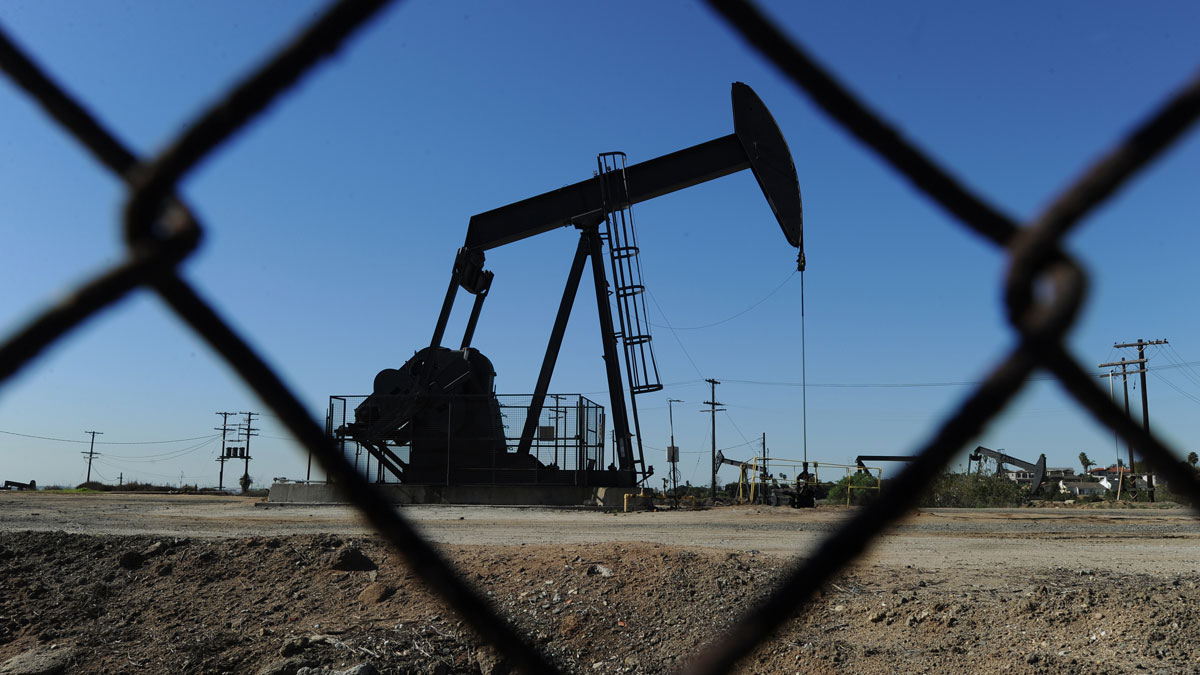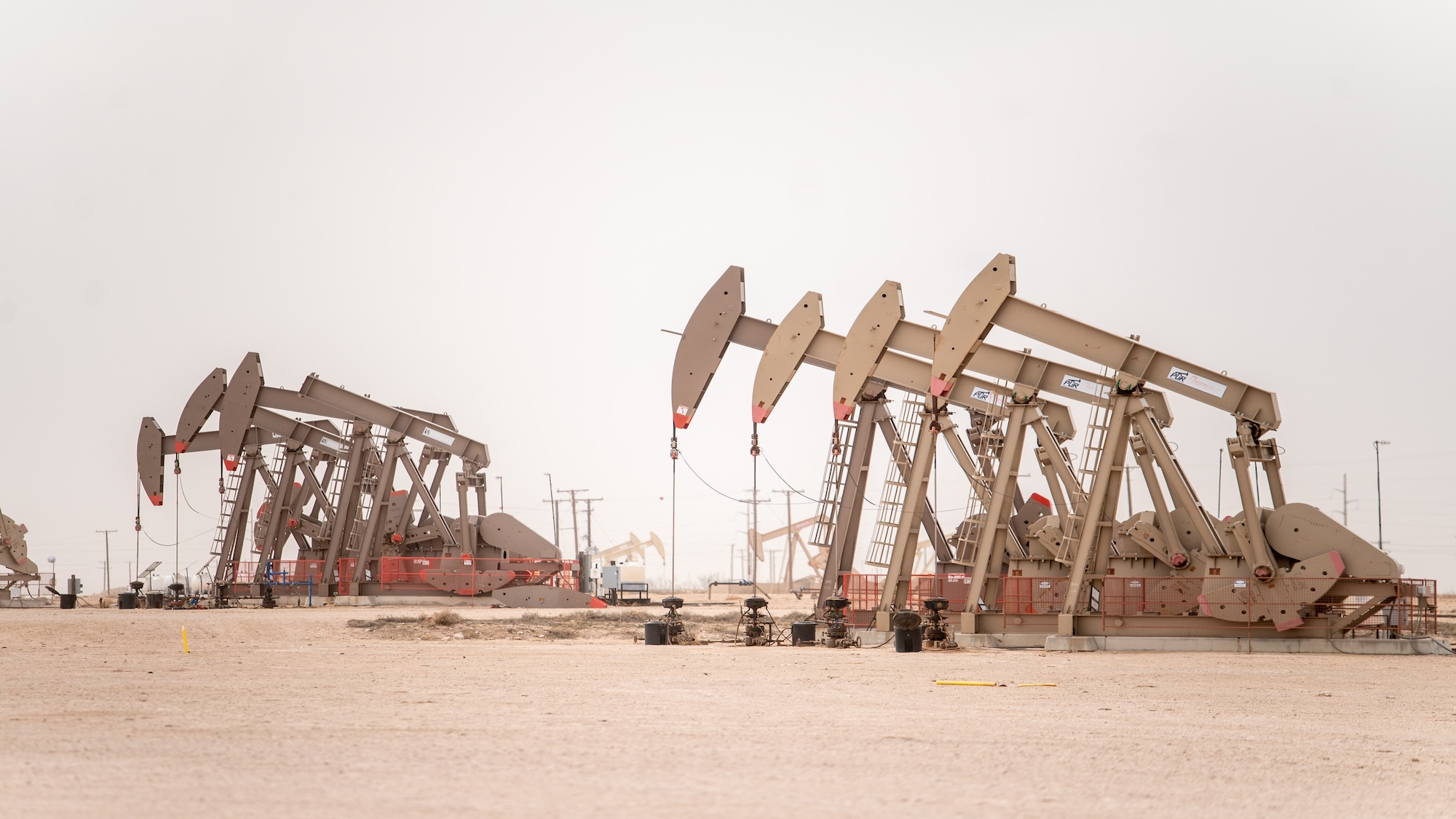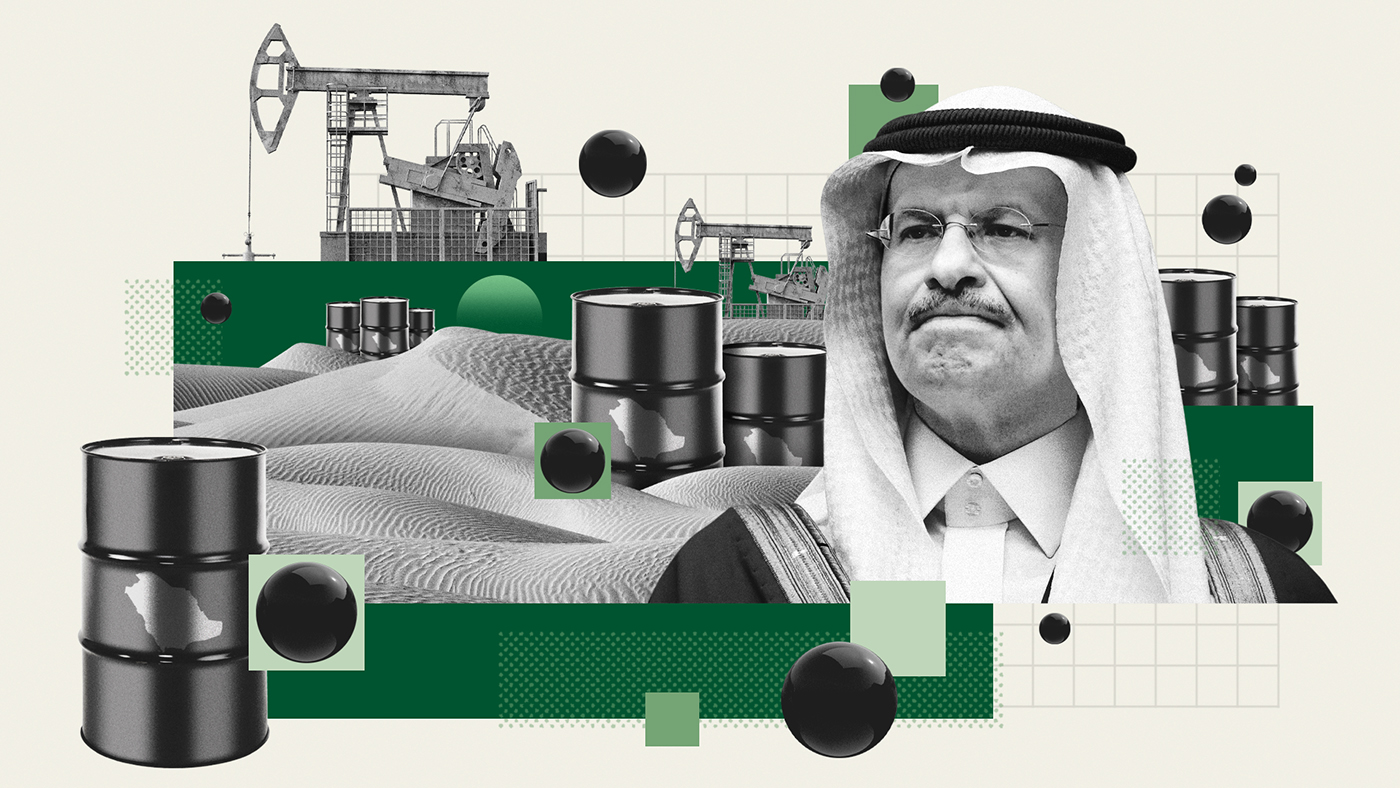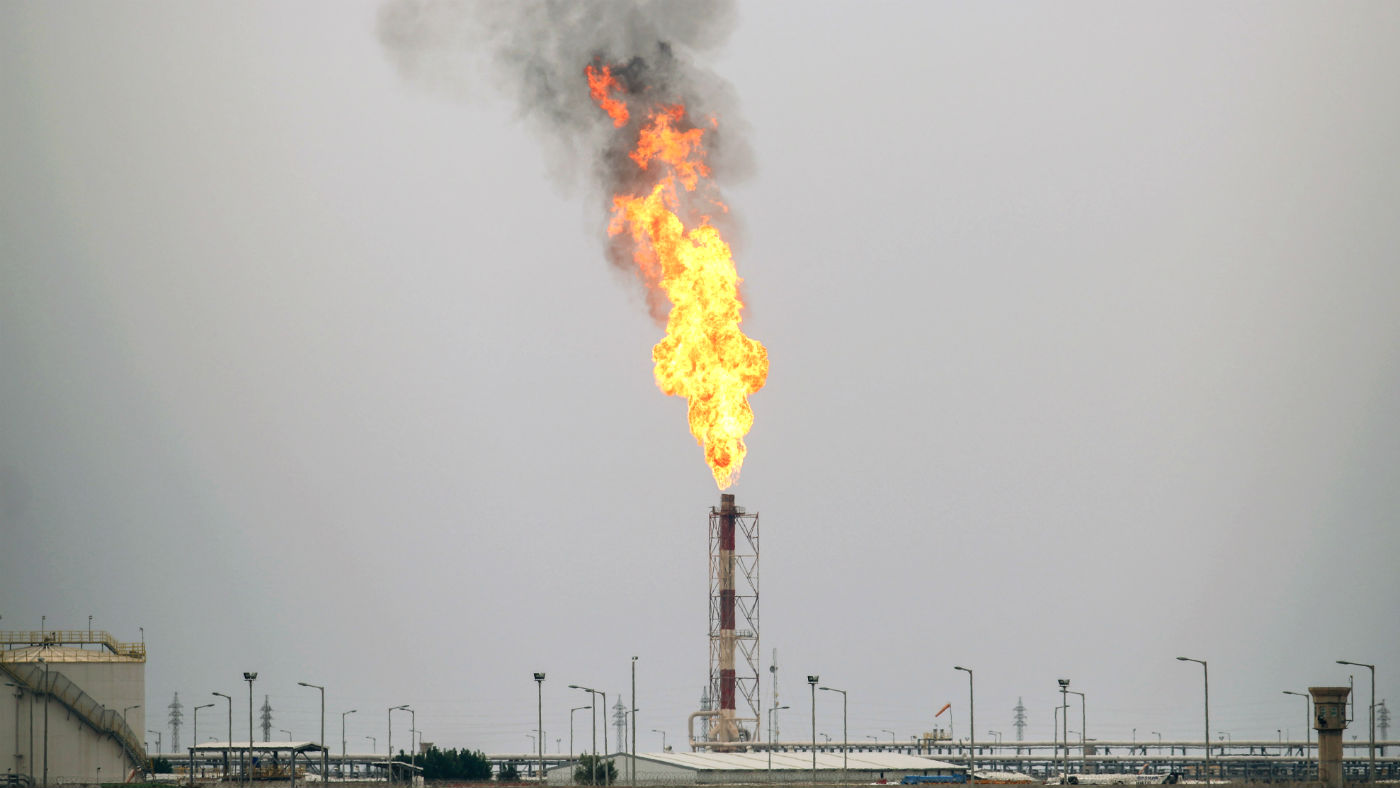Oil price posts two-year highs - but how long can it last?
Brent rose above $59 a barrel this week, its best third-quarter showing since 2004

Oil price: Predictions for 2017
23 December
Amid all the seismic political events in 2016, oil markets also saw their own major event at the end of November as oil cartel Opec agreed to a significant production cut.
That was the first time in eight years that the group had agreed to reduce output - and it was followed this month by the news that Russia and other non-Opec states will also curb exports.
The Week
Escape your echo chamber. Get the facts behind the news, plus analysis from multiple perspectives.

Sign up for The Week's Free Newsletters
From our morning news briefing to a weekly Good News Newsletter, get the best of The Week delivered directly to your inbox.
From our morning news briefing to a weekly Good News Newsletter, get the best of The Week delivered directly to your inbox.
There is widespread optimism that this will end two years of supply glut that has been responsible for a prolonged oil price slump. So what are the predictions for the oil price in 2017?
"Predictions by major organisations and investment banks are generally not widely diverging and hovering in the US$50-$60 range," says Oilprice.com.
Within this there are a narrow range of estimates for average forecasts, ranging from $55 from Goldman Sachs to just shy of $60 from the International Energy Agency.
Brent crude was this morning hanging around $54.40 a barrel level, while US counterpart West Texas Intermediate was at $52.40. That implies that gains next year will be limited.
A free daily email with the biggest news stories of the day – and the best features from TheWeek.com
In particular, there are concerns that Opec members may not stick to their commitments, that demand will underwhelm - or, more pressingly, that rising prices will trigger a surge in production in the US.
There are some who see prices rising more substantially, however: Raymond James told Reuters earlier this month that it reckons oil could jump to $83 a barrel in 2017.
Than again, back in June the firm saw oil at $75 a barrel in the first quarter of next year, which now looks very unlikely.
Oil price falls after surprise stocks build
22 December
A bearish pre-Christmas surprise on crude oil reserves in the US caused the oil price to fall back below $55 a barrel yesterday.
Earlier this week, the American Petroleum Institute forecast a substantial draw on US stockpiles of more than four million barrels, a result that would have marked the fifth consecutive week of falling stocks and supported the ongoing oil price rally.
In the event, however, the official figures from the Energy Information Administration (EIA) last night recorded a 2.3 million barrel increase last week.
That massively missed analyst expectations for a 2.5 million drop and reminded the market that overall supplies are still plentiful. Excess production around the world has weighed on prices for more than two years.
Brent crude, the international oil price benchmark, fell 1.5 per cent to around $54.50 a barrel yesterday and was down another 0.4 per cent this morning to $54.25.
Its US counterpart, West Texas Intermediate, fell by the same margin yesterday and this morning, reaching $52.30.
There was a fall in petrol and diesel stocks, but that merely signalled a return to a trend earlier in the year, when crude oil inventories were being determined largely by refinery activity that appeared to bear little relation to underwhelming demand for refined oil products.
"Taking advantage of plentiful and relatively cheap crude, refiners… are churning out more fuel than the market can absorb," says Reuters.
In general, however, the market remains optimistic on supplies going into 2017 after the deal between Opec and other world producers, including Russia, to cut global output by 1.8 million barrels a day.
Even the news that Libya, one of several Opec members exempted from the cuts, has "doubled output to 600,000 barrels a day" failed to dampen trader spirits too much.
Coupled with low trading volumes as markets wind down for the holidays, this means oil is caught in a fairly narrow range in the mid-$50s.
Oil price back above $55 after positive supply data
21 December
Brent crude was back above $55 a barrel this morning following a shift in trading sentiment after data suggested the market is more balanced on supply.
The international oil price benchmark rose 0.7 per cent to $55.70 a barrel this morning in London trading, while its US counterpart, West Texas Intermediate, traded 0.6 per cent higher to $53.60.
Brent had risen as high as $58 last week, but fell into the early-$50s over doubts about a deal between the powerful Opec cartel and other producer countries, including Russia, to cut 1.8 million barrels a day from global output next year.
That agreement is seen as critical to ensuring demand exceeds supply for the first time in three years in 2017.
Oversupply has dragged the market lower since mid-2014, amid a turf war between Saudi Arabia and its regional rivals, as well as upstart US shale oil producers.
However, there is now a sense that the market is returning closer to balance, helped by American Petroleum Institute (API) data last night estimating US crude stockpiles dropped by more than four million barrels last week.
In contrast to other occasions when reserves have been drawn down, this was accompanied by a fall in petrol and diesel stocks of 1.1 million and 900,000 barrels respectively, says MarketWatch.
Official government figures are released today and a two million barrel fall in crude reserves is expected, although with a rise in petrol and diesel inventories.
Analysts still believe oil will remain range-bound in the mid-$50s in the short term before rising to around $60 early next year if the oil producers stick to their commitments to cut exports.
The big test then is whether higher prices provide another boost to US shale producers.
As such, analysts will also scour the US figures for signs the count of drilling rigs is picking up pace, which could suggest a production surge to come.
Oil price edges above $55 – but gains are still being capped
19 December
The oil price has edged higher overnight and this morning but remains caught in a relatively tight range in the mid-$50s a barrel.
Brent crude, the international oil price benchmark, had been close to $58 early last week but fell back as low as $53 a barrel. This morning it was up 0.5 per cent to $55.49 a barrel.
Its US counterpart, West Texas Intermediate, was up 0.6 per cent this morning to $52.22.
The latest push for oil came "in anticipation of tighter crude supply going into 2017 following the decision by Opec and other producers to cut output," says Reuters.
In particular, concerns that discord between the 13 members of Opec would undermine compliance with the deal were mollified by comments from Saudi Arabia that it is prepared to make up a substantial portion of the pledged reduction.
Opec has promised to cut 1.2 million barrels a day from January, but there are reports that Iraq, the group's second-largest producer, has "increased its January loadings versus December".
Saudi Arabia has said it is prepared to "cut production below 10 million barrels per day if needed", which is down from around 10.5 million barrels per day currently.
Bloomberg adds that a "planned production boost from Libya", another significant Opec producer, has not materialised as oil-facility guards "backtracked on an agreement to allow supply to flow from the El Feel and Sharara fields, two of the country’s biggest".
"Libya is the largest key variable on the supply side in the short term, so the fact there is an element of doubt on field restarts is supporting the market," said Ric Spooner from CMC Markets in Sydney.
Many analysts are predicting a rise to nearer $60 next year, but in the short term prices are being capped, not least because of a continued increase in activity in the US shale sector.
There are fears that with oil prices now sustainably above $50 a barrel, a huge rise in output from the US could undermine the supply cuts elsewhere.
Since a trough in May, the number of active rigs has risen by 61 per cent and US production has jumped from 8.5 million to 8.8 million barrels per day, says Reuters.
Oil price will get close to $60 in early 2017, says Goldman Sachs
16 December
One of the most bearish oil-price analysts has upped its 2017 forecasts for the second time in two weeks.
Earlier this year, Goldman Sachs sensationally predicted the oil price could slump to as low as $20 a barrel as entrenched oversupply wreaked havoc on the market.
It was almost proved right, too, as oil sunk to well below $30 a barrel in February.
But since the powerful Opec cartel – followed by a group of other global producers - confirmed a deal to cut output by almost 1.8 million barrels per day from January, the US investment bank has increased its already much-improved forecasts.
At first it said compliance with the deal would be around 55 per cent, equating to a million barrels per day, and predicted oil would rise to $55.
It has now revised those estimates in the wake of signs that some Opec states are already making moves to cut production next month, says Reuters.
In particular, "Kuwait, Saudi Arabia, and Abu Dhabi… have notified customers that they would cut supplies from January".
The investment bank says it expects Brent crude, the international oil price benchmark, to hit $59 a barrel in the second quarter and West Texas Intermediate (WTI) to make $57.50.
In the short term, however, prices will not move much from their current base in the low $50s, well below last week's peak of $58, as the market waits for signs of Opec members following through on their pledges.
"Iraq, the group's second biggest producer after Saudi Arabia, has signed new deals that will increase its sales to Asian customers like China and India despite its commitment to reduce output by 210,000 [barrels]," Reuters adds.
US investment bank Jefferies said the agreement "has likely put a floor on Brent oil prices in the low $50s until such time as adherence to the cuts can be assessed".
Brent and WTI were mostly unchanged this morning, at around $54 and $51 a barrel respectively.
Oil price continues to drift as dollar surges
15 December
Oil prices continued to drift modestly from the year-to-date high reached earlier this week as the dollar surged to a 14-year high yesterday.
The US currency received a boost after the Federal Reserve increased base interest rates for the first time this year and predicted it would do so three more times in the coming 12 months.
While the December hike was expected, the forward-looking forecast represents a shift to a more bullish stance since September, when two rate increases were being predicted for 2017.
Caught off guard by the news, traders bought into the dollar strongly, prompting a sell-off in dollar-denominated commodities like oil.
"A stronger dollar tends to hit crude demand as it makes fuel purchases more expensive for users of other currencies," says Reuters.
Brent crude, which earlier this week reached a 16-month peak of close to $58 a barrel, fell more than three per cent to below $54 before recovering slightly to around $54.30 this morning. Its US counterpart, West Texas Intermediate, fell around four per cent to below $51 a barrel, then bounced back to around $51.20.
Analysts said the falls came despite new data from US energy watchdog the Energy Information Administration showing a larger-than-expected drop in US crude reserves of 2.6 million barrels last week.
But some noted the bulk of the declines were concentrated on the west coast and do "not truly reflect supply demand fundamentals of the energy complex", says Reuters.
In addition, petrol stocks were shown to have risen for the fifth consecutive week, increasing by 500,000 barrels, says Oilprice.com.
Also weighing on sentiment is a warning from Opec that supply would exceed demand by 1.2 million barrels a day without pledges from its members and other global producers to cut daily supply by around 1.8 million next year.
Analysts generally expect a degree of "cheating" from the cartel and Goldman Sachs has predicted the actual cut will be one million barrels, which would keep the market oversupplied.
However, traders believe oil prices will remain buoyant for now as optimism is strong on the Opec deal. There are also predictions trading could even rise above $60 a barrel early next year.
"Any weakness should be temporary. The market has faith in the Opec/non-Opec deal," said Tamas Varga, at brokerage PVM Oil Associates in London.
-
 Trump’s poll collapse: can he stop the slide?
Trump’s poll collapse: can he stop the slide?Talking Point President who promised to ease cost-of-living has found that US economic woes can’t be solved ‘via executive fiat’
-
 Sudoku hard: December 7, 2025
Sudoku hard: December 7, 2025The daily hard sudoku puzzle from The Week
-
 Codeword: December 7, 2025
Codeword: December 7, 2025The daily codeword puzzle from The Week
-
 How might the Israel-Hamas war affect the global economy?
How might the Israel-Hamas war affect the global economy?Today's Big Question Regional escalation could send oil prices and inflation sky-high, sparking a worldwide recession
-
 Recent mega-mergers could signal a turning point for the US oil industry
Recent mega-mergers could signal a turning point for the US oil industryTalking Point Both Chevron and Exxon have recently spent billions to acquire smaller oil companies
-
 Has Saudi Arabia lost control of oil prices?
Has Saudi Arabia lost control of oil prices?Today's Big Question Kingdom goes it alone to cut production, risking tension with US and reigniting cooling inflation in Europe
-
 US angered by Opec+ oil cut
US angered by Opec+ oil cutSpeed Read Energy prices to rise further as producers slash supply by two million barrels a day
-
 Global oil demand forecast lowered for 2020 and 2021
Global oil demand forecast lowered for 2020 and 2021Speed Read IEA report says jet fuel demand remains the major source of weakness
-
 Are US-Iran tensions flaring again?
Are US-Iran tensions flaring again?In Depth Trump threatens military action over Twitter
-
 Can a deal be struck to raise oil prices?
Can a deal be struck to raise oil prices?In Depth Opec+ will convene today over video link in a bid to boost crude
-
 What do negative oil prices mean?
What do negative oil prices mean?In Depth Perfect storm of oversupply and storage shortages sees producers paying to get rid of US crude